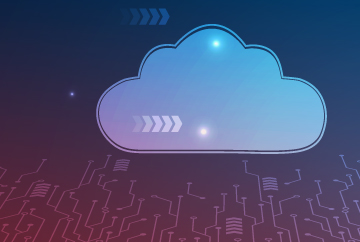Why should businesses focus on cloud application modernization?
The enterprises are rushing towards a revival, post the Coronavirus (COVID-19) pandemic. They now need to be more agile and equipped with modern, future-ready infrastructure and applications. Legacy application architectures are increasingly growing obsolete in today’s digital value chain.
The enterprises are increasingly looking towards a new framework for staying competitive in the market. Cloud Application Modernization allows enterprises to move away from a monolithic application architecture (for example, the traditional client-server-database model) to one in which applications can be deployed as a collection of independently functioning, self-contained units over public or hybrid multi-cloud.
The evolving digital needs of customers and the introduction of viable, economical, self-sustaining infrastructure models that are better suited to today’s technological change are the primary reasons for enterprises focusing on cloud application modernization.
According to a study, over 70-80% of CIOs report that their IT budgets are tied to legacy spends. The legacy systems consume almost 74% of the IT spend. The cloud application modernization not only brings the cost benefit but also unlocks the IT budget, allowing room for innovation and exploring new avenues for business expansion.
What are the certain steps that businesses should keep in mind while building their cloud application Modernization roadmap?
To avoid any kind of failure in the Legacy Application Modernization program, enterprises need to have a clear picture of the requirements, risks and benefits involved. The CIOs must be prepared for the massive change that comes with such a large-scale transformation. Here are the four essential steps that businesses should keep in mind while building their cloud application modernization roadmap:
Application Migration Portfolio Assessment: The first thing enterprises must do is to map their existing application portfolio along with the dimensions of migration/modernization complexity and the business value associated with it. Some enterprises might require rationalizing their portfolio before modernization. They need to be clear on the following:
- Routinely track ICT risks across sources to ensure remediation through appropriate protection and hindrance measures.
- Is the application (or its parts) ready for cloud integration?
- How does the workload vary by time and geographies?
- What are the current architectural and performance considerations, and how do they stand against modern benchmarks?
- What is the net value delivered by the existing application portfolio, and how satisfied are the customers?
- If there are upcoming version releases and upgrades along with the continuous improvement strategy, then how will the modernization trajectory take care of those?
Identifying the 5 R’s: The next step is identifying the 5 R’s of application modernization – Rehosting, Refactoring, Re-platforming, Re-building and Re-placing, prioritized from lowest to highest in terms of transformational change that fuels these approaches. For example, if a service was deployed a decade ago when smartphone penetration was relatively low, re-platforming might become an essential part of the application modernization roadmap. On the other hand, rearchitecting will make more sense if a cloud-native deployment is needed. Each of these options will require a proper strategy to maintain the target operating model’s application, in conjunction with decoupling (A process of breaking down a monolithic application and identifying constituent capabilities and services that facilitate various actions in the business’ digital value chain).
Measure the variables against the benchmarks: The application modernization must measure change along with the variables they aim to improve and set new benchmarks for attaining agility, scalability and resilience along with an enhanced security and risk management strategy. For example, if a traditional bank is modernizing its core banking services through re-platforming, it must adopt forward-looking metrics like engagement times, reduction in common service requests along other channels. Simultaneously, the CIO’s must keep track of modernization efforts.
Define Your Target Operating Model: While defining the application modernization roadmap, the CIOs should consider ownership of microservices, ownership of configuration and management of production platforms in their newer target operating model. The target operating model should also fit-in with the dimensions of the application portfolio – will you choose a CX-driven operating model over a data-driven one? What functions will be outsourced? How will the selection affect the sequence in which you engage the levers in the modernization process?



